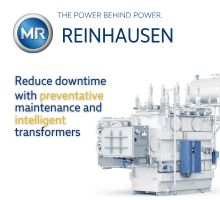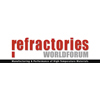Life Cycle Assessment Highlights Steel’s Role in Reducing Vehicle Emissions
09/19/2011 - The director of WorldAutoSteel recently presented the results of a global steel industry initiative, FutureSteelVehicle, developed by EDAG and supported by investors of the Steel Market Development Institute, highlighting the importance of life cycle assessment to fully understanding and reducing vehicle emissions.
The director of WorldAutoSteel, Cees ten Broek, recently presented the results of a global steel industry initiative, FutureSteelVehicle (FSV), developed by engineering firm EDAG and supported by investors of the Steel Market Development Institute (SMDI), highlighting the importance of life cycle assessment (LCA) to fully understanding and reducing vehicle emissions.
“When vehicle emissions assessments are focused solely on what comes out of the tailpipe, this encourages use of low-density, greenhouse gas-intensive materials that may provide lighter-weight components to improve tailpipe emissions,” ten Broek said. “However, their greenhouse gas intensity may have the unintended consequence of increasing greenhouse gas emissions on a life cycle basis.”
According to the recent study titled “Preparing for a Life Cycle CO2 Measure,” conducted by global engineering firm Ricardo for the U.K.’s Low Carbon Vehicle Partnership, vehicle production, including materials manufacturing, accounts for approximately 25% of the life cycle emissions in today’s vehicles. These are the embedded emissions that occur before a vehicle is driven on the road.
The same study estimates that embedded emissions will grow to 57% of the total life cycle emissions in large part due to the introduction of battery-powered vehicles. As energy sources used to power batteries increase in efficiencies, the material manufacturing portion of embedded emissions will increase in importance. Without a LCA strategy in place, material decision makers will not be aware of the environmental impact, which is why the FSV program is so important, according to ten Broek.
ten Broek and EDAG presented the FSV results, which demonstrated that body structure weights for battery and fuel cell vehicles are on par with aluminum designs and a 70% reduction in life cycle emissions over similarly sized vehicles using internal combustion engines.
“Because steel manufacturing has one-fifth to one-twentieth the emissions of alternate materials, these designs are truly a breakthrough, enabling reductions through the entire life cycle from manufacturing to tailpipe to recyclability,” ten Broek said.
Specifically, the FSV program delivered significant mass savings in four proposed vehicles for 2015 to 2020: a compact battery electric vehicle; plug-in hybrid (PHEV); midsize-class PHEV; and midsize fuel cell electric options.
“SMDI and WorldAutoSteel are actively pursuing the advancement of LCA-based vehicle designs because we believe it is the only way that vehicle emissions can truly be reduced for meaningful impact, today and tomorrow,” said Ronald Krupitzer, Vice President, Automotive Applications, SMDI.
The Steel Market Development Institute (SMDI), a business unit of the American Iron and Steel Institute, grows and maintains the use of steel through strategies that promote cost-effective solutions in the automotive, construction and container markets, as well as for new-growth opportunities in emerging steel markets.
WorldAutoSteel, the automotive group of the World Steel Association, is comprised of 17 major global steel producers from around the world. WorldAutoSteel’s mission is to advance and communicate steel’s unique ability to meet the automotive industry’s needs and challenges in a sustainable and environmentally responsible way.



-(1)-Reinhausen-(1).jpg?lang=en-US&ext=.jpg)






